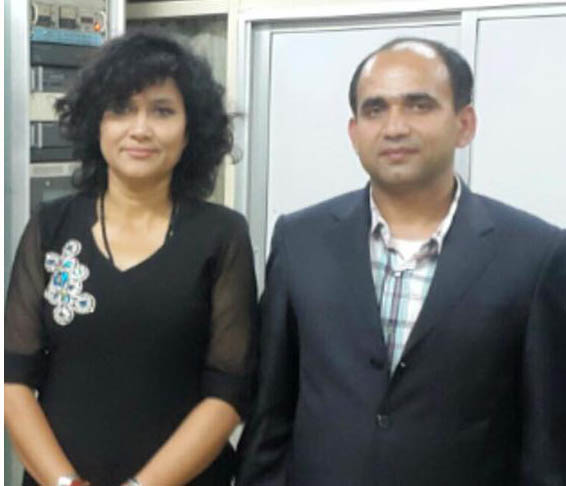Tremors’ comforting voices
Soon after the 7.6 earthquake rocked the nation on April 25, 2015, all means of communication came to a halt. With people taking shelter under tents in whatever open spaces available, Radio Nepal was one medium that kept people updated on the quake and related information. And two voices — of its news anchor Komal Oli and seismologist Lok Bijaya Adhikari informed, updated and consoled the panicked Nepali citizens most of the time. And these two figures look back at their quake memories with The Himalayan Times.
Work experience during the tremors
I was on my way to an event at Rastriya Naach Ghar and had stopped at a gas station to fill fuel when the earthquake struck. So, I drove to Radio Nepal, Singha Durbar instead. There was an outcry and people were in distraught. Then, I felt it was my responsibility to provide information to people about the quake. So, I started working from the same day. I was in the evening shift. I was in direct contact with earthquake experts during the process and was taking calls from people.
There was fear but I also took this an opportunity to serve the people — we were getting calls for help from places and we were coordinating with people concerned, and trying to ease their trauma. I was also scared, especially during
the powerful aftershocks. I was tempted to run out of the studio while conversing with people over the phone who would scream, “Aayo (it is coming)”. But I would control myself and act calmly. It required lots of courage. Looking back at those days, now I wonder how I did it!
Does any experience of then affect you now?
There aren’t any such traumatic experiences regarding the Gorkha earthquake. But I remember people, who used to be in lab, running out from the building when aftershocks jolted Kathmandu, except our staff. NSC staff went close to the computer for processing without fearing the effects of earthquake. That was not because the office building is strong enough. This is because they remembered their duty. I also remember children who were psychologically disturbed after this earthquake.
Lastly, I would like to share that people should understand that earthquake is our close friend which can’t be avoided. We should cope with it. An intense research is necessary to cope with earthquakes. I feel happy that people have understood the value of the National Seismological Centre.
— Lok Bijaya Adhikari, Chief, National Seismological Centre






